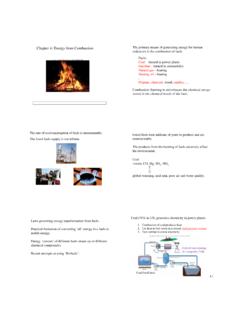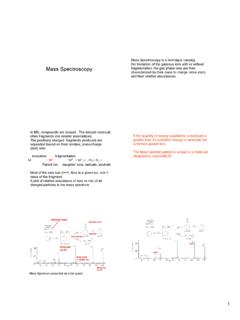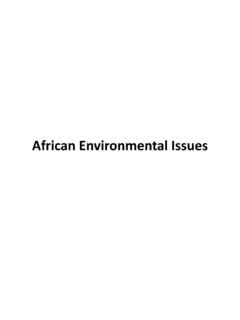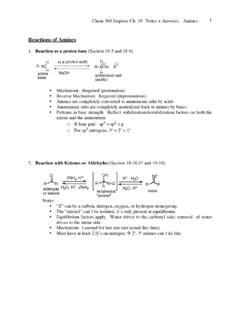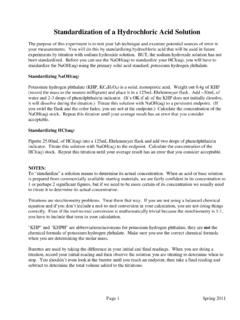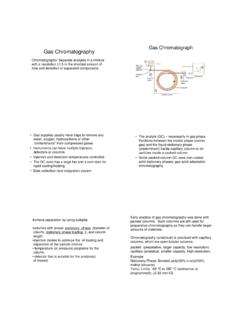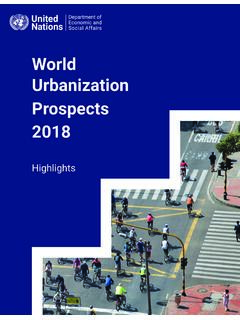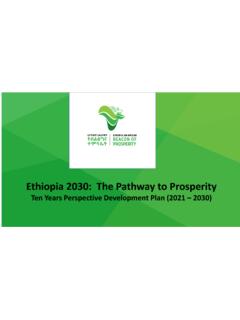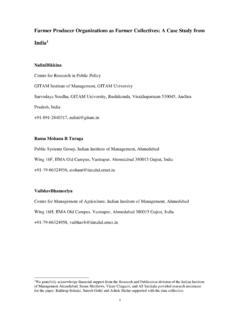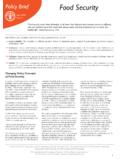Transcription of theories of migration2014
1 1/30/20141 theories OF MIGRATIONANTH 308/Migration and Human AdaptationReadings Trager Migration &EconomyIntroduction(Pp. 1 48) Cohen & Sirkeci chapter 2. 1/30/20142 Cohen & Sirkeci chapter 2 Reality of migration growth is complex. Cannot assume that what works in Europe holds true in other parts of the world. The demographic structures and cultural practices of various countries & populations are not uniform. Economic practices vary from place to place and among the differing strata of a country. Mobility did not follow a single recipe. Two forces encouraged mobility through 19thand 20thcenturies: & Sirkeci chapter 2 Great Depression (1929 1940) brought a lot of international movement to an abrupt end and forced many repatriations across the globe.
2 Growing involvement of the state in migration increased as anti immigrant sentiment built up during recession and depression. Internal mobility shifted from search for opportunity to attempt to escape from insecurity, disaster, danger. Forced migration: refugees asylum seekers internally displaced peoples. Unemployed men line up for workMen working in a field1/30/20143 Cohen & Sirkeci chapter 2 Beginning in 1960s, rural to urban migration accelerated. International migration from Third World to First. From south to north. From east to west. Trager s key arguments1. Migration includes a variety of types of mobilitythat should be examined in combination with one another.
3 Of migration need to incorporate both macrolevelforces and is an ongoing process with continuing implications for those involved but also for the people to whom they (migrants) are connected. 1/30/20144 theories of Migration Two main types of theories have been used to explain migration:1)those emphasizing macroeconomic forces,especially labor markets. Focus primarily on causesof migration, not consequences. 2)those which focus on individual decisions Presume that individualsmigrate with expectation of doing better. Middle level theories /models Dissatisfaction with both macro level & individual approaches leads Trager & other anthropologists to suggest need to emphasize intermediate levels of social organization: Family Community Network1/30/20145 Middle level theories /modelsResearch on intermediate levels of social organization has contributed to the analysis and understanding of the long term consequences of migration.
4 Migration is not a single event, of one individual leaving a place and moving to another place. Rather, it involves ongoing connections that are formed and maintained among people located in a variety of places. Those ongoing relationships have consequencesfor those who move and for those who stay behind; they have implications for the home community and the destination community; they lead to the formation of social networks that span specific communities and societies. (Trager, page 19). linkages Relatively little attention paid to movement of citizens within their own countries except where urbanization is viewed as a serious problem.
5 rural - urban migration creates a system with links between city & country. Particularly true in Africa. Multiple dimensions to linkages : Social Economic Cultural Political Same principle can also be applied to transnational linkages . 1/30/20146 Remittances Money sent home by migrants. Occur in variety of ways Difficult to get accurate data. Less information on internal migration than international. Remittances often not reported. Discussions usually focus on the impact of remittances. Debate about value of remittances in terms of development. Do they tend to be used for productive investments? Do they help equalize rural income distribution Or do they contribute to greater inequality?
6 Top 20 Remittance-Receiving Countries by $ amount0510152025 IndiaChinaMexicoFrancePhilippinesSpainBe lgiumGermanyUKMoroccoSerbiaPakistanBrazi lBangladeshEgyptPortugalViet NamColombiaUSAN igeriaBillions of dollarsSource: World Bank. Global Economic Prospects 2006: Economic Implications of Remittances and 20 Remittance-Receiving Countries by % of GDP05101520253035 TongaMoldovaLesothoHaitiBosniaJordanJama icaSerbiaEl SalvadorHondurasPhilippinesDom. of GDPS ource: World Bank. Global Economic Prospects 2006: Economic Implications of Remittances and of remittance uses (Trager page 25, based on Connell & Conway 2000) & dependent basic capital resource investments( , education) specific capital ventures(land, housing, business property).
7 Micro economic investments ( , shops, transport). support, maintenance & & remigration Housingis common way migrants demonstrate boththeir success& their commitmentto remaining connected with their home area. Need to go beyond simple economics & recognize symbolic value of remittances. Consider them in cultural contexts that place high value on reciprocal housein PuertoRicoMultilocality & community Discussions of remittances & exchanges usually presume two exchanges take place between a migrant & others in one other place the home . majority of exchanges take place between family or household members.
8 Increasingly apparent that connections are maintained with people in multiple locales & with people who are not only kin but with others of the same community .1/30/20149 Multilocality & community More efficient transportation & communication systems make it possible to move & communicate over great distances Multilocalitywill become the norm for increasing numbers of people. Trager rather than become rootless , migrants are in some ways more rooted to those places from which they come. Multilocality & community Research on international migration suggests formation of transnational communities in which individuals & groups constantly negotiate choices with regard to their participation in host societies, their relationships to their homelands, & their links to co ethnicsG Regardless of how migrants define their home communities, there are several ways in which they tend to engage with those communities.
9 Two of major patterns of for the benefit of those at home (Trager pp. 29 30)
